A fireplace, a camouflaged town hall - London's WW2 scars are everywhere
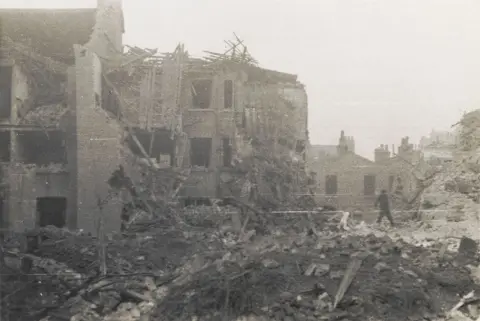 Westminster City Archives
Westminster City ArchivesLondon's streets may seem modern, but hidden among its buildings and alleyways are silent reminders of World War Two - fireplaces, shattered walls and faded shelter signs that tell the forgotten stories of survival and destruction from the Blitz.
Just before dawn on 22 August 1944 a German V1 flying bomb, launched from across the English Channel, smashed down into residential homes around Vincent Street in Westminster, central London.
Three houses were instantly demolished in the blast, while numerous others were severely damaged as gas pipes fractured and flames took hold.
Seven people were killed and nine others injured; people who had likely been sleeping and failed to hear the ominous buzz followed by deadly silence which signalled a V1 rocket was about to explode.
Photos taken in the aftermath show bricks, wood and rubble piled high around the skeletons of homes which would never be built again, the houses and belongings of many lost in an instant.
Yet look closely along Vincent Street today and an unexpected reminder of those people remain.
Set in the back of a garden wall along a driveway, a fireplace from one of the destroyed homes remains set in place.
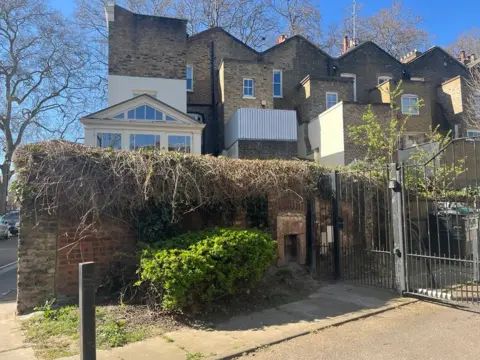
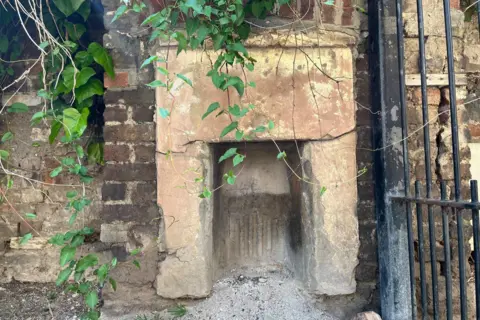
"It's very moving when you first see it. Seeing this glimpse inside someone's house makes it seem more real," says City guide and founder of Look Up London, Katie Wignall.
"Sometimes it was luck if a bomb hit you or your neighbour and that must have been really hard... it was completely random."
'Wounds of the building'
Eighty years after World War Two was declared over in Europe, such scars of a six-year conflict remain etched across London.
Some have been left as memorials, others by accident, but all provide a snapshot of life in a city where an estimated 12,000 tonnes of enemy bombs were dropped, resulting in the deaths of nearly 30,000 people.
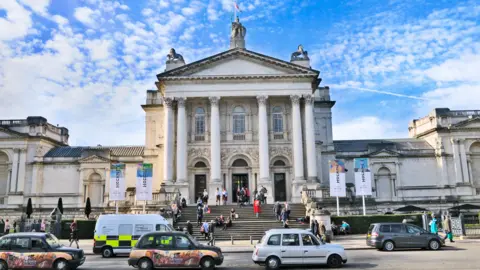 Getty Images
Getty ImagesWalk along Exhibition Road among the museums of South Kensington and the violence of the Blitz is in plain sight, with the west wall of the Victoria & Albert Museum badly cracked and cratered.
The damage continues across the road with the pock-marked walls of the Natural History Museum - both the result of a particularly fierce attack on 19 April 1941.
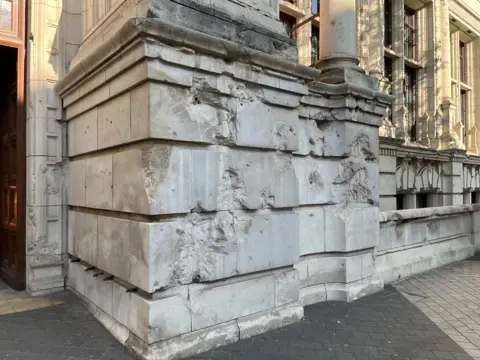
"Some key places where bomb damage has been preserved are on public buildings like parts of Tate Britain and Westminster Abbey," explains Katie.
"If people are not from the UK who I'm showing around, they'll often say 'that building needs a bit of work' and you're like 'no, it's intentional, it's part of a collective memory through the displaying the wounds of the building'."
'Huge damage'
From when the first bomb fell on Fore Street, near the Barbican, on 25 August 1940, the City of London particularly felt the brunt of the German Luftwaffe's raids.
"All of this area running along the Thames corridor south of St Paul's suffered huge damage in the Blitz," remarks Caroline Haines, the chair of the City Of London Corporation's Natural Environment board, as she sits among the ruins of St Dunstan's in the East church.
Around her where a congregation once sat on pews every Sunday, office workers and tourists perch on benches beneath former church walls that now have vines and plant life crawling across them.
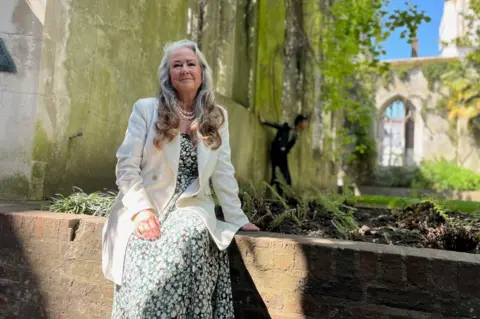
St Dunstan's was once one of the 52 churches rebuilt by architect Sir Christopher Wren in the wake of the Great Fire of London in 1666, but was then wrecked in the Blitz. With a lack of finances available after the war, it and other City sites found a new existence over subsequent decades.
"Wherever we took over the bomb damaged areas of the City we developed gardens and we have upwards of about 200 small gardens, plazas and churchyards across the Square Mile," says Caroline.
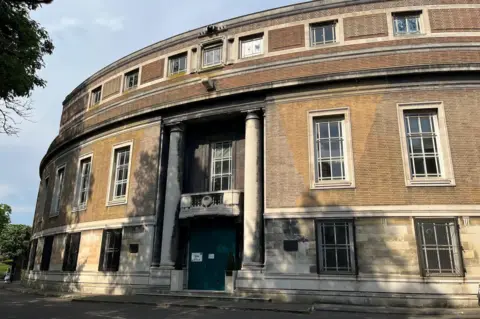
While bomb damage can be found at various sites, other parts of London offer an insight into the fear and panic experienced by a city on the brink of conflict, as well as the preparations that were put in place for any possible scenario.
In Stoke Newington, the art deco town hall still has dark triangular patches streaking across its brickwork, the result of efforts to camouflage the newly built civic centre from anticipated German attacks.
Similarly, Wandsworth Bridge remains to be the grey-blue colour it was painted to conceal it from enemy bombers following its completion in 1939.
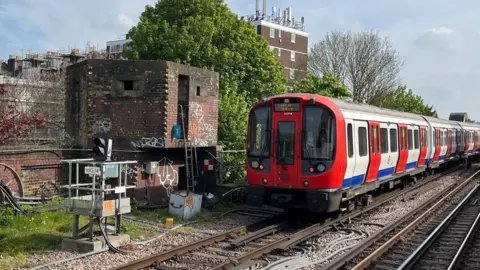
Further west, Tube trains rattle past a squat concrete building with small look-out windows at the end of a platform at Putney Bridge station, one of only a handful of remaining pillboxes in the capital.
When war was declared, large numbers of such buildings were erected in rings around the city as a last line of defence if German troops ever made it into London.
"I think now we take it for granted that they never invaded. But in 1940 people didn't know that and actually there was such fear," says City guide Katie.
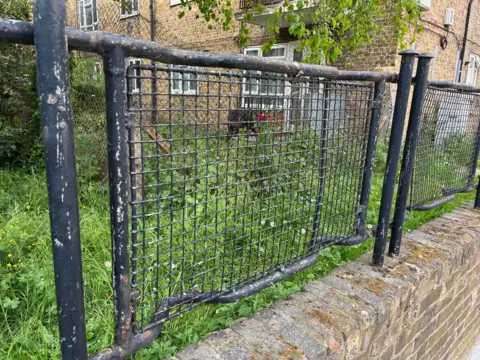
Fears of mass casualties from bombing or invasion can also be seen south of the river where oddly-shaped railings surround several of Southwark's post-war estates.
"The government made about 600,000 of these stretchers which were easy to clean and could be mass produced, so they could carry people who'd been injured at times like air raids," explains Katie.
Created out of metal so they could be easily decontaminated in the face of feared gas attacks, many were never used so London County Council began erecting them as railings around new blocks of housing where they remain.
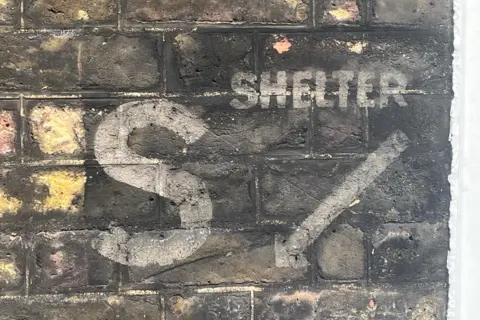
Life in World War Two London was also epitomised by the need to find cover as sirens wailed in the face of an air attack.
The Civil Defence Act passed in 1939 gave local authorities powers to requisition large spaces to use as air raid shelters.
Today fading stencilled signs on the sides of buildings in areas like Westminster and Deptford still point towards staircases that once led people to spaces where they could huddle away during bombing raids.
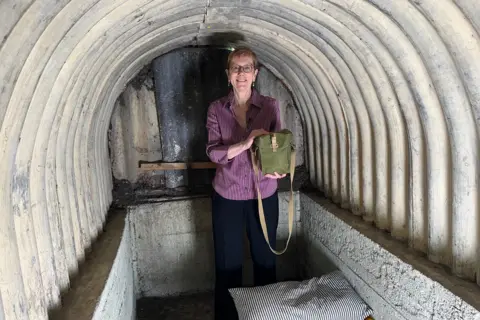
Private homes would also have their own provisions. In the back garden of a house in Oval, a corrugated iron World War Two Anderson shelter remains dug in the ground and covered by soil and vegetation.
Within its concrete base rests the frame of one of the original beds where a family once slept as German bombers dropped explosives around the area.
"A bomb fell on the street and people in this shelter survived, whereas others were not as fortunate," explains the home's owner Janice Munday.
"The sirens would have been going off, it would have been completely pitch black. They couldn't have any lights out and they had to get in here whilst possibly bombs were coming down nearby - it must have been terrifying."
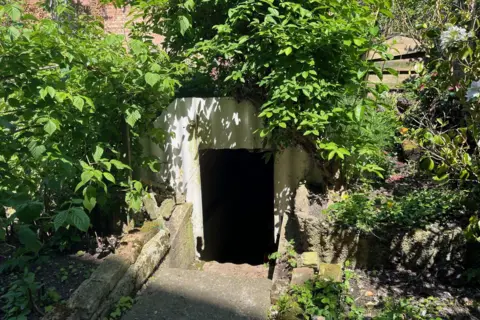
With no laws in place to protect them, few Anderson shelters still survive but Janice and her husband Martin arrange visits to theirs and say they are glad to have it in their garden.
"It's really important to remember how people lived," says Janice.
"My mother was a child during the war and she tells me about trying to get into the air raid shelter at night with her younger brother and her mother having hysterics behind her.
"To understand that this is how people had to survive and live is just so important."


Listen to the best of BBC Radio London on Sounds and follow BBC London on Facebook, X and Instagram. Send your story ideas to [email protected]
